Meet Alexandra Carter | Visual Artist

We had the good fortune of connecting with Alexandra Carter and we’ve shared our conversation below.
Hi Alexandra, can you tell us more about your background and the role it’s played in shaping who you are today?
I grew up on my family’s cranberry farm in South Shore Massachusetts, the birthplace of cranberries, where the first wild vines were discovered centuries ago. This upbringing was particularly unique in how it connected me to the land. Our lives revolved around seasons of growth, harvest, and frost. I consider these roots a core part of my identity. I watched my father devote himself to a job he loves, and my mother meanwhile was a maker herself–she is a decorative painter, and always had an art studio where she worked on all kinds of things from painting ceramic tiles to floorcloths. The example they modeled, of being passionate about what you spend everyday doing, is what I wanted to emulate as I knew I wanted to be an artist, and never steered from that path.
Cranberry imagery eventually made its way into my paintings. When I had trouble in trying to start a family of my own, and sought out treatment for infertility, the cranberry became a very specific symbol for me. I began to relate the language of agricultural fertility that I was surrounded by as a child with the fertility of the female body, both aesthetically and conceptually, in my work. Cranberries in my paintings became female body parts associated with sustenance, like wombs and breasts. They became a symbol of bounty and abundance.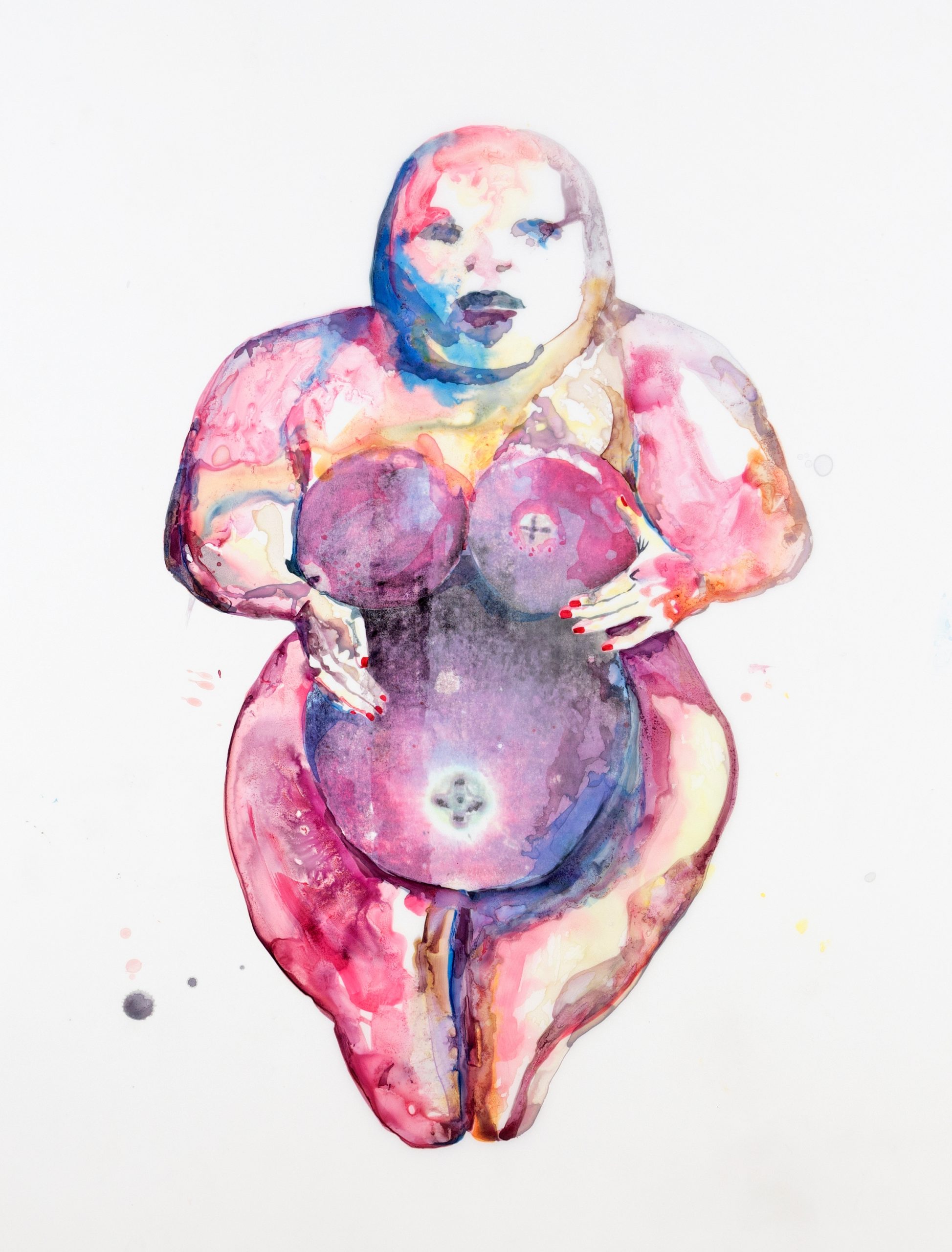
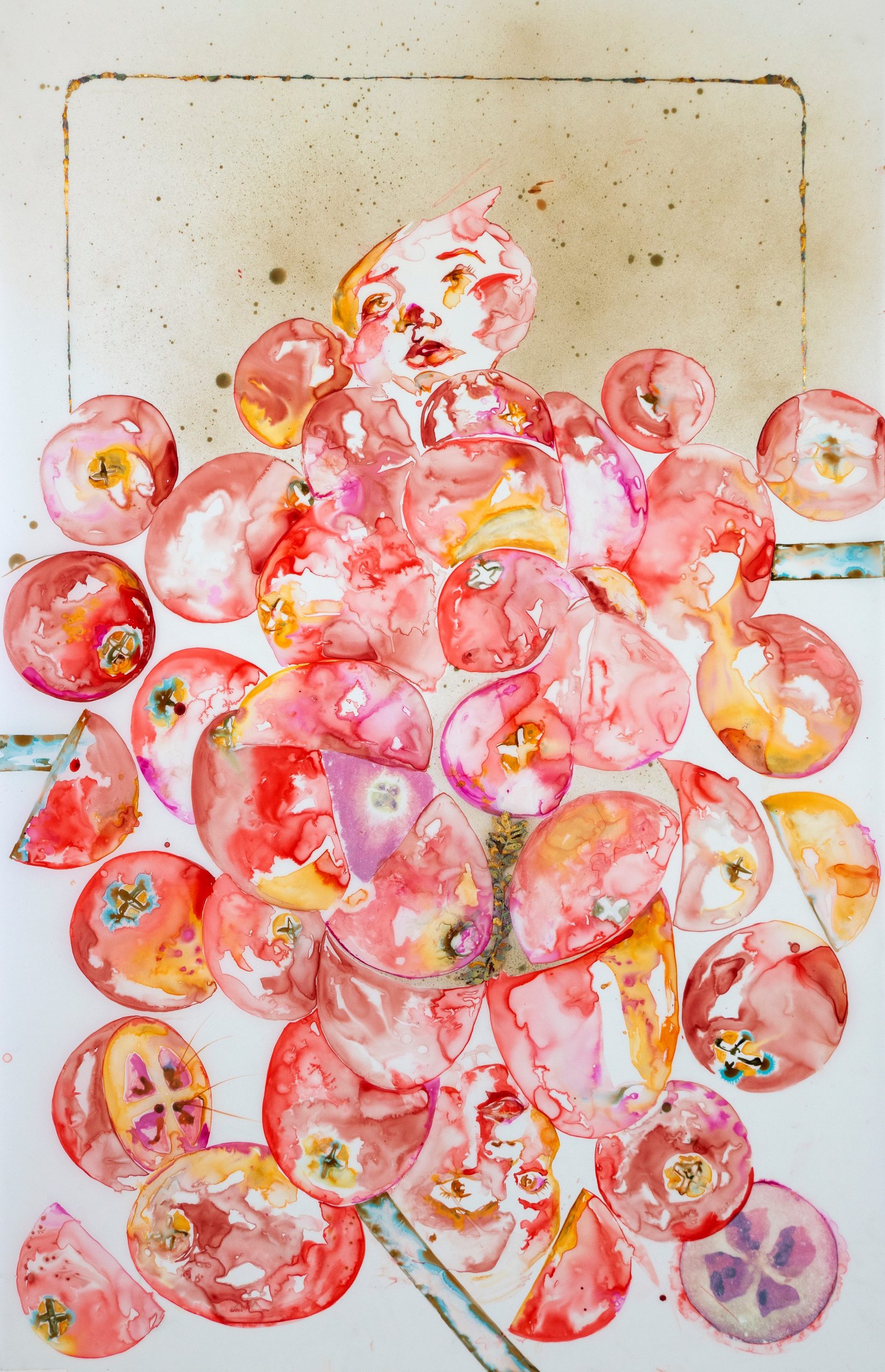
Alright, so let’s move onto what keeps you busy professionally?
I make figurative paintings that explore themes of fertility, motherhood, and the monstrous feminine (which is the idea of the feminine as inherently monstrous–my paintings envision this not in a pejorative way, but as empowered). I look to folklore and classical mythology for inspiration, and reference my own body and background in my work. I draw from my cranberry farm upbringing to speak specifically to those aspects of fertility and fecundity of the female body, as I mentioned above. Literature, dance, costume and performance influence my work, resulting in figures that are often mid-movement, in flux or some kind of transition. My journey through fertility treatment, pregnancy and birth have contributed to my idea of the female body as explosive or uncontained, while my painting materials support that idea. I use alternative media and surfaces to emphasize a visceral mark, primarily watered-down acrylic ink on nonporous translucent drafting film (a.k.a. mylar). The spill of ink on this matte surface refers back to the body permeating beyond its own boundaries.
I’ve been painting since before I could remember. Painting, in a sense, has always been something I’ve needed to do. The way that it resonates with an audience is a whole different story. Studying art in undergrad and then attending grad school in London for my MFA helped me clarify what kinds of conversations I want to stimulate through my work. I’ve also attended artist residencies all over the world throughout my career, which has greatly diversified the kinds of influences and audiences I’ve been able to garner for my work. I’ve learned that this kind of travel and branching out is incredibly important to me, and so I’ve continued to make it a priority even after having children.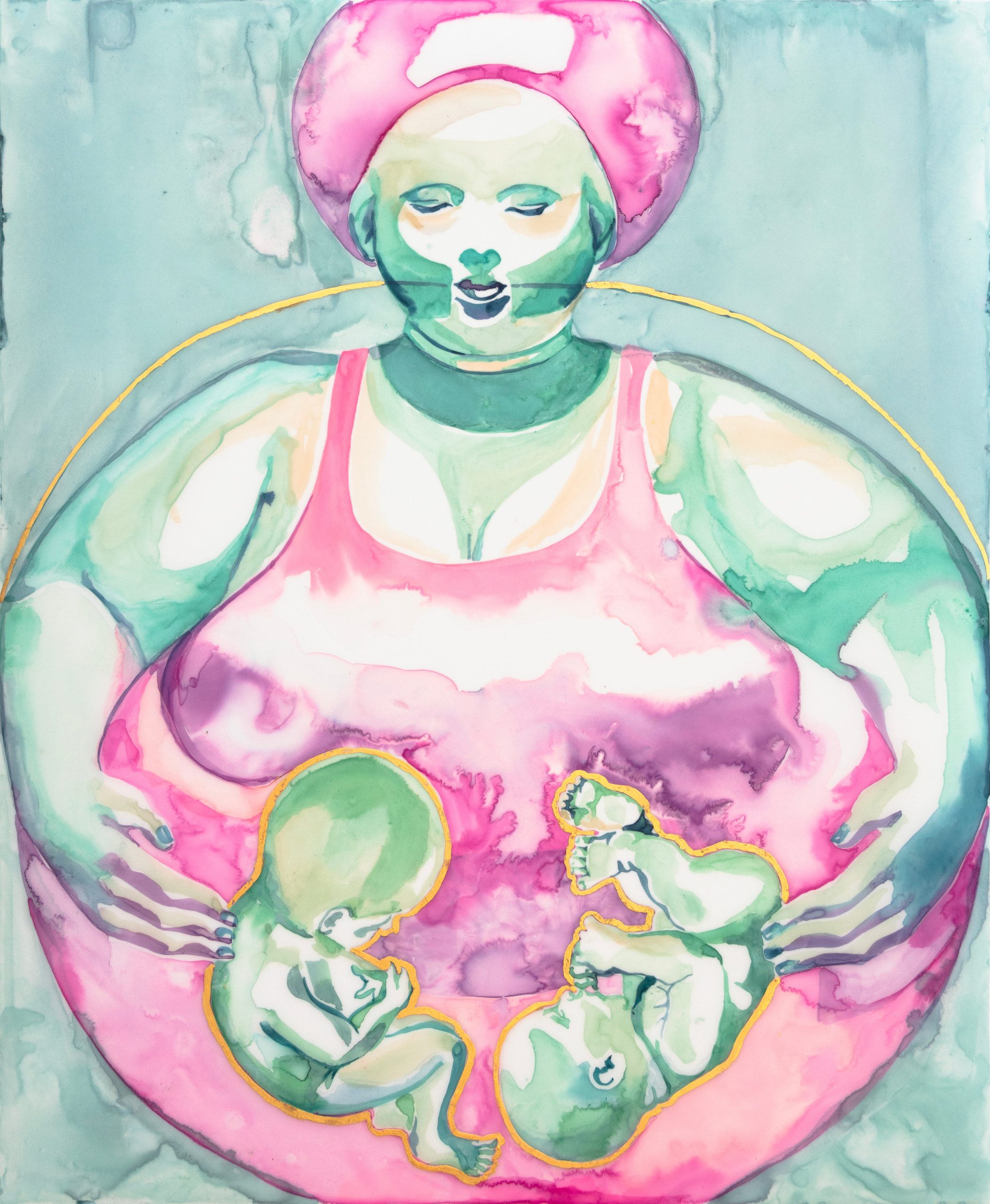
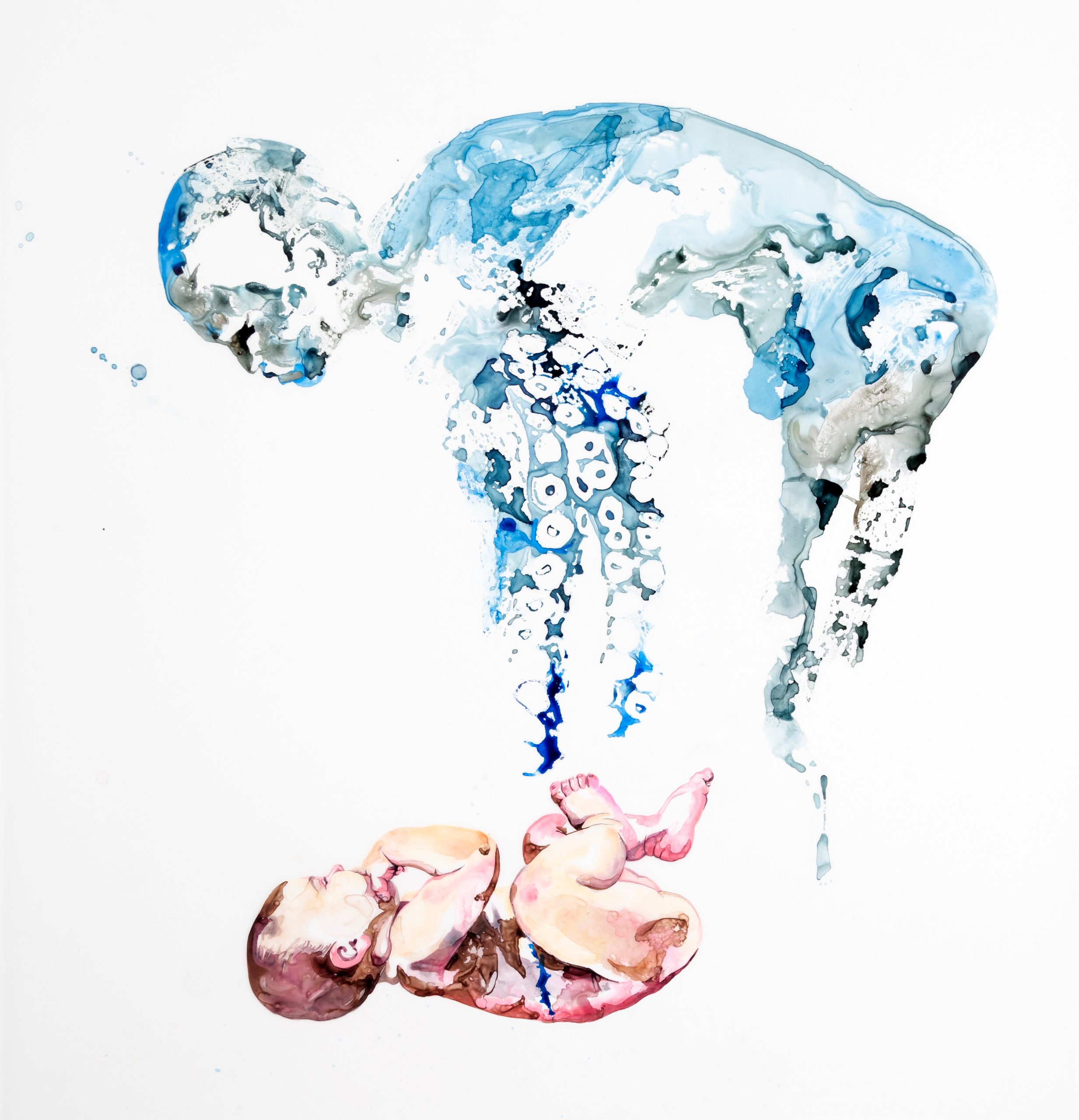
Let’s say your best friend was visiting the area and you wanted to show them the best time ever. Where would you take them? Give us a little itinerary – say it was a week long trip, where would you eat, drink, visit, hang out, etc.
My favorite things about LA are its art offerings (both galleries and museums), its stunning landscapes and its food! I would start with a hike at Griffith Park–such a beautiful hike which provides a good lay of the land. The week would be peppered with museum visits and lots of stops at taco stands. The Hammer and LACMA are two of my favorite museums: they both offer great exhibitions as well as peaceful outdoor spaces to dwell in–that indoor/outdoor experience is another quality specific to Southern California. I would do lots of gallery hopping: start out downtown or east, and check out some of my favorites like Hauser & Wirth, Anat Ebgi, Nicodim, Ghebaly, and Lauren Powell Projects, then head slightly west to hit up some more like Make Room, Nazarian/Curcio, Dietch, and the Hole. I’d reserve at least one day for some seaside action–perhaps accompany my husband when he goes spearfishing in Malibu. We could hike one of the trails nearby like Los Leones and then go to the Getty Villa. I’d also spend some time in the Culver City area, where we could check out the utterly unique Museum of Jurassic Technology, followed by a wine flight at Stanley’s Wet Goods and dinner at Margot.
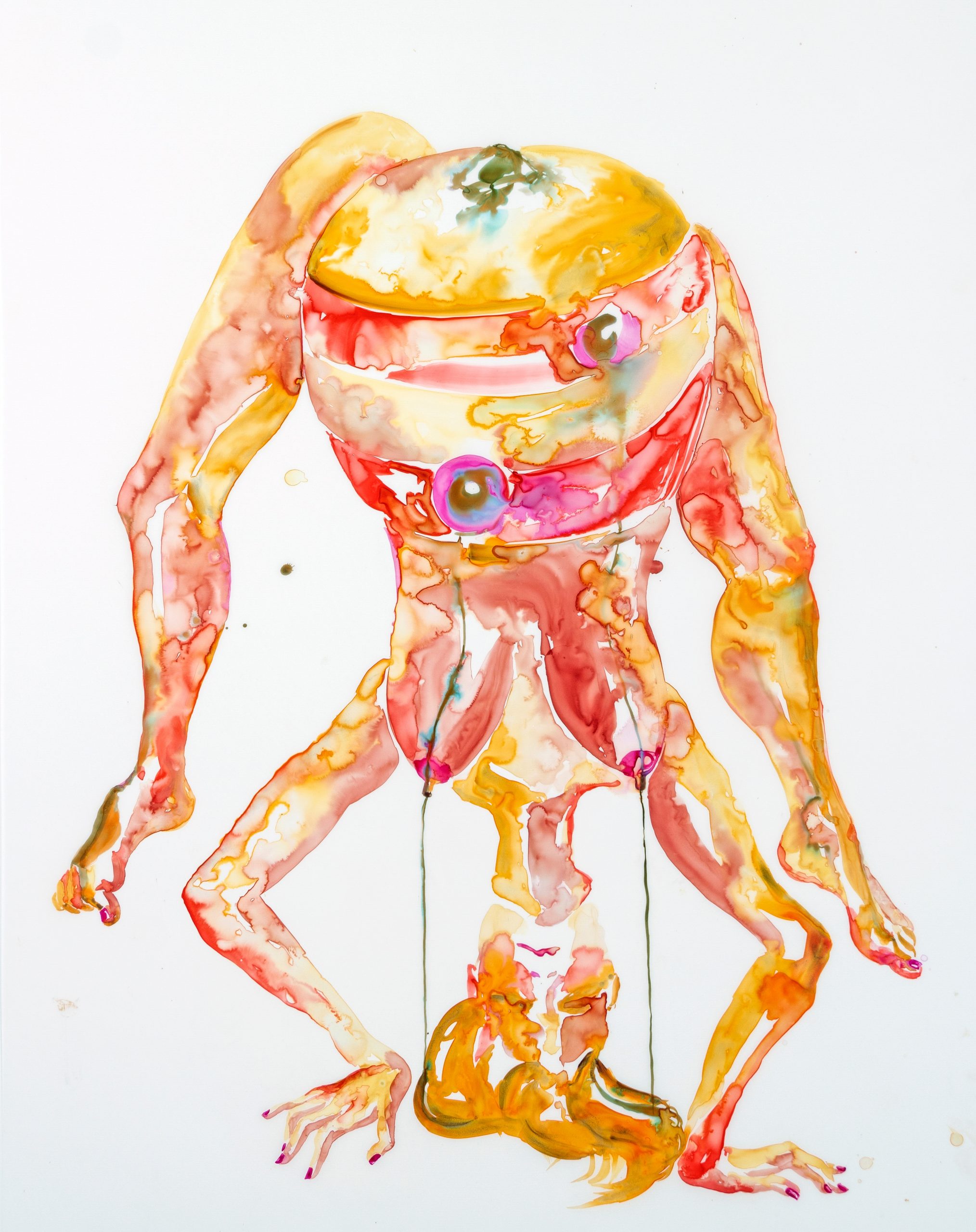
The Shoutout series is all about recognizing that our success and where we are in life is at least somewhat thanks to the efforts, support, mentorship, love and encouragement of others. So is there someone that you want to dedicate your shoutout to?
My first LA solo show was curated by Olivia Mia Orozco, a very talented independent curator, dancer and choreographer. Since then, she has always fostered my practice and advocated my work in different shows and spaces. I couldn’t imagine my LA artist identity without her.
Similarly, I have to send another shoutout to Anna Bagirov, who has also championed my work since she opened Luna Anaïs Gallery, a nomadic gallery that shows women and nonbinary artists. I was her inaugural show in 2020, held in a great space in the Arts District, and have continued to work with her.
Both of these women have a keen eye and are doing the work to get underrepresented female creatives seen. Thank you both!
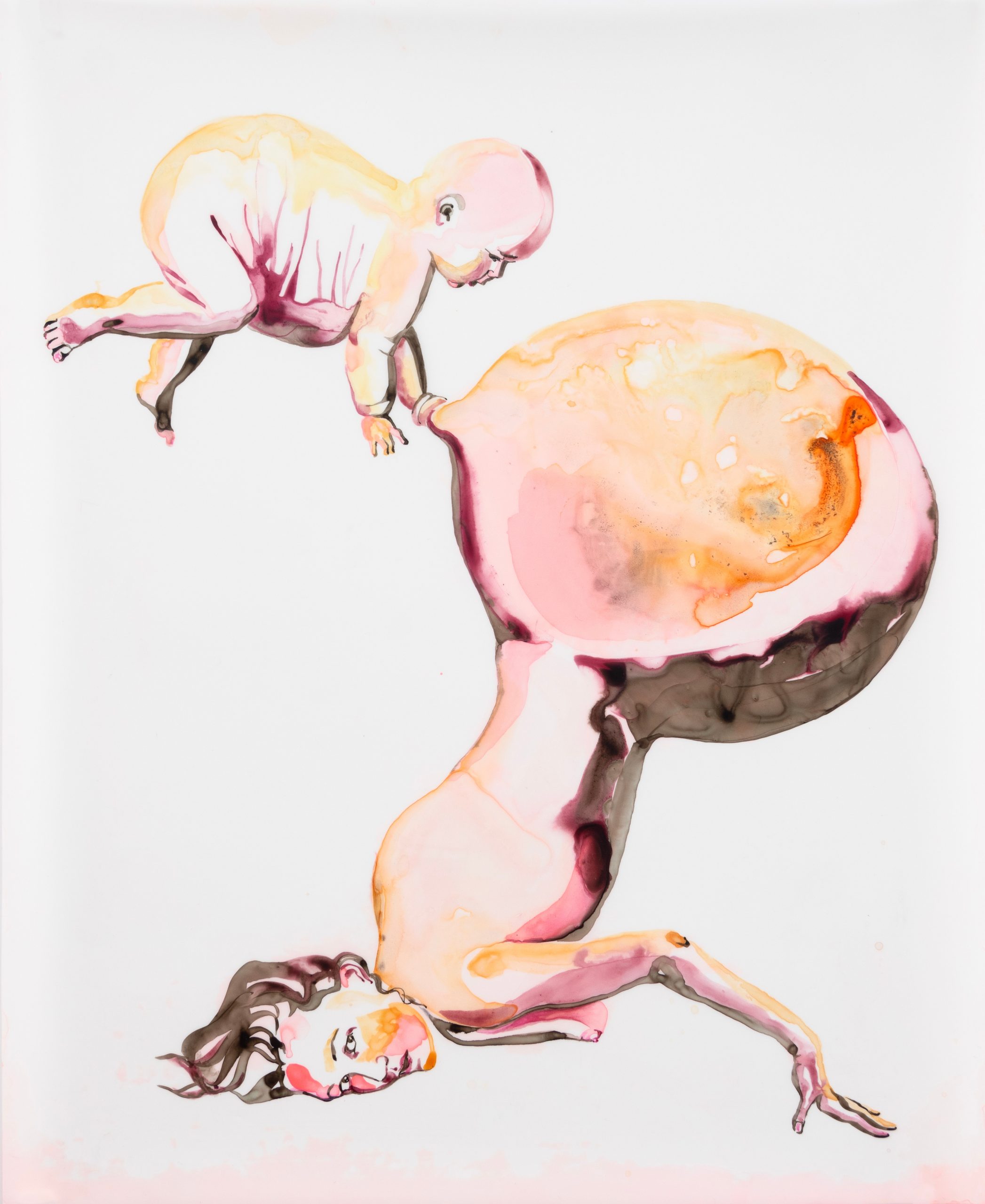
Website: https://www.alexandra-carter.com/
Instagram: https://www.instagram.com/alexandracarterstudio/
